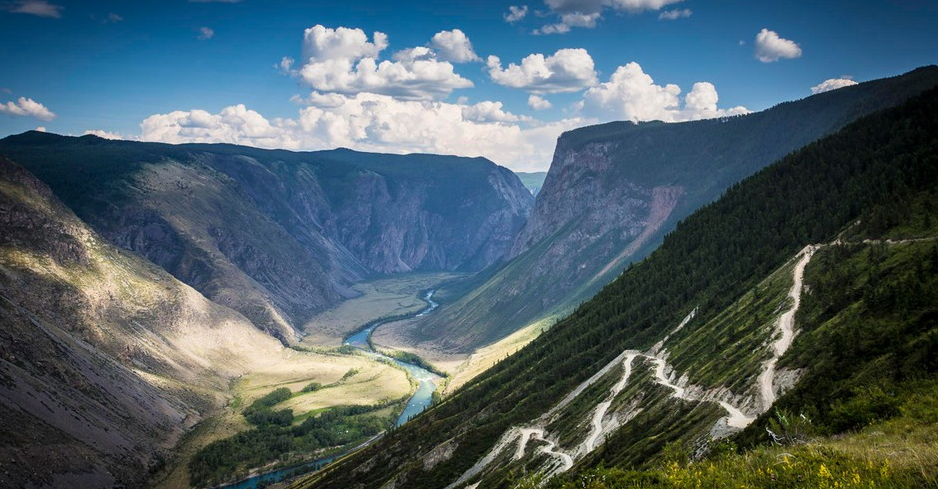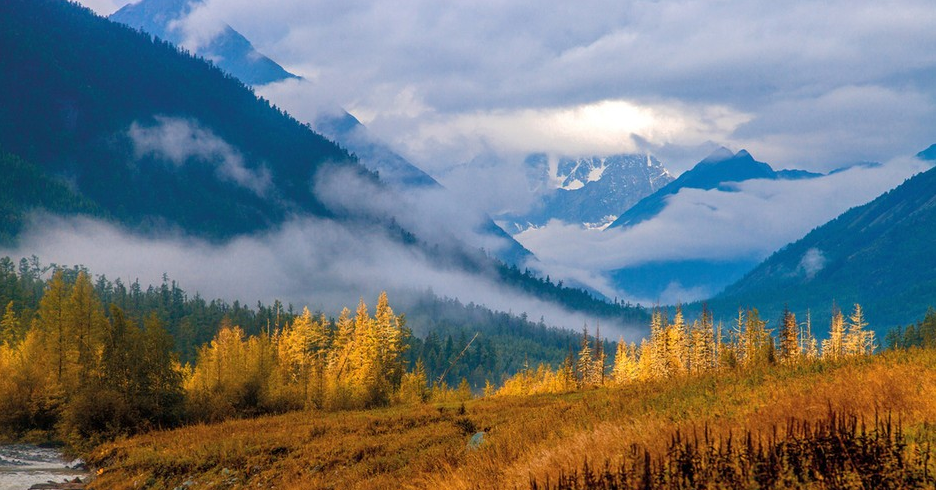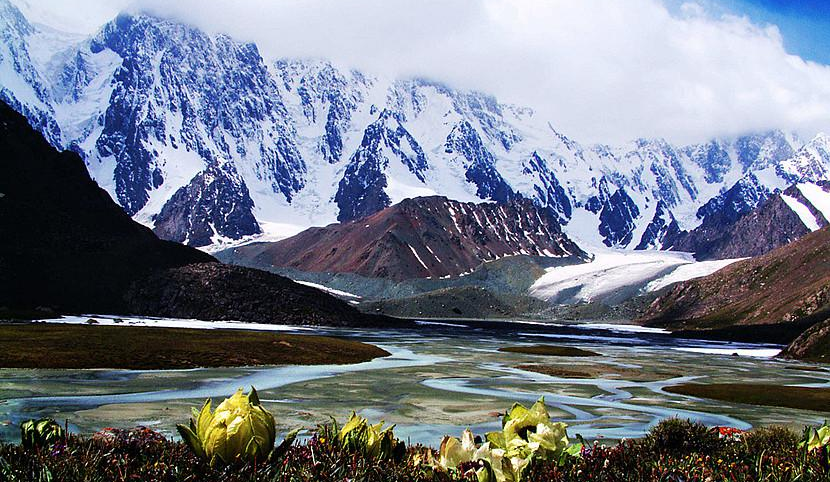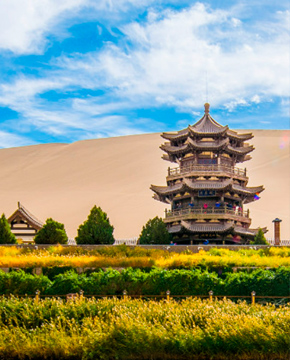
“Altay”, a Mongolian name, means “gold”. So it is the name of Altay Mountains, meaning “the gold mountains”. Altay Mountains about 2000 kilometers in length, northwest to southeast in direction, lies in Inner Asia, covering the land of China, Russia and Mongolia. The middle part of the mountains lies in the borders between China, Russia and Mongolia, about 500 kilometers long. And the southern slope area is in the territory of Xinjiang. The general height of this part is about 3000 meters and the highest peak, the Friendship Peak, lies in the border between China, Russia and Mongolia, 4374 meters above the sea level. In the northern part, the highest peak, Altun Aoboo Peak, is about 3290 meters in height. The average rain fall in the mountain area is about 400-800 mm. And the forests of dahurian larch mainly in the area of the altitudes between 1200 meters - 2300 meters, and below the forests, is fine pastures. There is a visible change of summer temperature from higher mountain to lower hills.

In winter there is thick snow in the mid part of the mountain areas. In the mountains there are some small basins. Seven natural landscape belts can be seen in Altay Mountains and they from a vertical natural vegetation belts. In the eastern part of Altay Mountains is Keketuohai, which is a well known for nonferrous metal reserve and smeltery. In the western part is Kanas Lake area, a famous tourist site and a nature reserve as well. The rivers of Altay Mountains flow from the north to the south, belonging to two river systems, one is Erqis River system , starting from Habahe to Fuyun, and the down part: Ebe River, flows into the Artic Ocean. So Erqis River System is the only one of the Artic Water System. Another one, Urunkor River System, formed in Qinghe County area with many small rivers, flows into Urunkor Lake, and the river is an inland one of Zhungar Basin. Altay Mountains is rich in mineral reserves, such as gold, nonferrous metals and rare stones. The nonferrous metal reserves and rare stones in the eastern part have been exploited.




